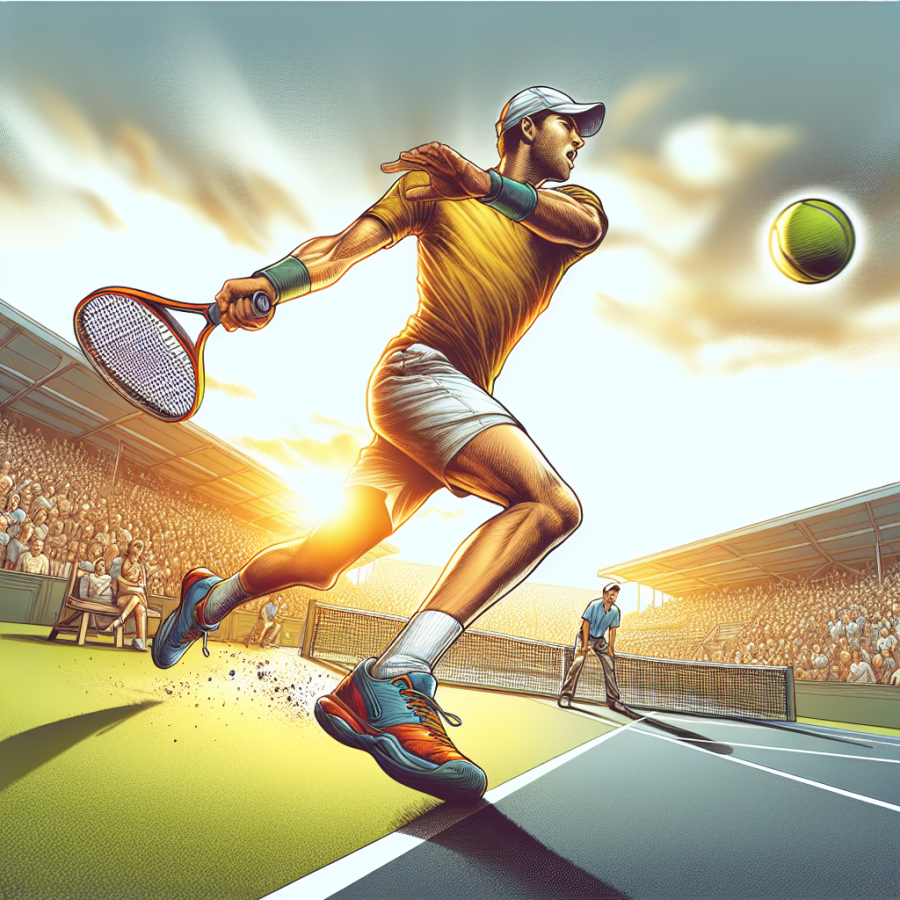Advancing Your Game: Key Strategies for Mastering Modern Tennis
Understanding the evolution of tennis is one step towards mastering the sport. With the changes that the game has undergone over the years, it's important to develop adaptable strategies that will keep up with its modern conventions. Here are some key strategies to elevate your game in the contemporary world of tennis:
1. Embrace Technology:
With innovations in racket technology, wearable devices, and fitness trackers, tennis players can leverage this to advance their game. You can analyze your strokes, speed, calories burned, heart rate and more. Use these insights to tweak your game, focusing on your shortcomings and amplifying your strengths.
2. Serve Importance:
Never underestimate the power of a good serve. It can put you in a dominant position right from the start and it's one of the factors that most differentiate the skill levels of players. Consistently practice your service technique, coupling strength with accuracy, to set the pace of the game.
3. Anticipate Your Opponent:
Part of thriving in modern tennis involves understanding your rival’s game strategy. Study their playing patterns, their preferred strokes and common moves. Use this information to your advantage by anticipating their next move and countering effectively.
4. Physical Conditioning:
Tennis in the modern age is far more physically demanding. Superior endurance, agility, and strength give a player an edge over their opponents. Engage in regular strength and endurance exercises outside the court to boost your game performance.
5. Mental Strength:
Mental stamina has become just as important as physical strength. Build your mental toughness to handle the pressure of the game, stay focused and make good decisions on the spot. Cultivating this aspect of your game can be done through practice, meditation, visualization, and coaching.
6. Embrace Variety:
Develop a flexible game strategy that allows you to mix up your shots to keep your opponent guessing. Being able to switch between a powerful baseline play and a subtle drop shot can keep your opponent off-balance.
7. Hire a coach:
A coach can provide valuable insights into various aspects of your performance and give guidance on how to improve. Even professional players continually work with their coaches to hone their skills and adapt to the changing demands of modern tennis.
8. Surface Adaptation:
Learn how to adjust your game depending on the court's surface. Whether playing on grass, clay or hard court, each comes with its unique game requirements. Adapting to them will take your game performance to another level.
Read also:
Assessing the Top Contenders: Which Golf Cart is the Best?"
Tracing the Transformation: Historical Developments in Tennis
In the late 19th century, tennis was introduced as a leisurely game played on a grass court surrounded by elegant English gardens. The sport was a genteel pastime enjoyed primarily by aristocrats. Fast forward to the present day, and tennis has undergone dramatic changes, technologically, tactically and culturally, morphing it into a globally-followed competitive sport.
One of the major changes that occurred was the transition from grass courts to clay and hard courts. This resulted in a change in gameplay dynamics, challenging players to adapt their strategies and techniques to suit the new court types. Grass courts emphasized speed and serve-and-volley tactics, enabled by the fast pace of a bouncing ball. Conversely, clay and hard courts slowed the game down, putting more stress on long rallies and baseline play.
The introduction of newer racket technology played a crucial role in how the game has evolved. In the early days, players used wooden rackets with small heads and long shafts. These rackets had a small sweet spot, demanding high levels of skill and precise timing. As technology advanced, wooden rackets were replaced first by metal rackets and then by composite ones, made from lighter, more durable materials like graphite. These modern rackets had a bigger head and a larger sweet spot, enabling more power, accuracy, and consistency in shots.
The evolution of tennis balls also contributed to the transformation of tennis. Initially, tennis balls were handmade from leather stuffed with wool or hair. These balls had very inconsistent bounce and were quickly replaced by rubber balls which were more predictable and durable. Ultimately, the balls were made hollow with pressurized gas inside to ensure a consistent bounce. Furthermore, the development of fluorescent yellow tennis balls, replacing the traditional white, enhanced the visibility for both players and spectators.
Changes in rules and scoring over the years also significantly impacted the game. The introduction of tie-breaks in the 1970s stopped marathon matches and brought a new strategic element. More recently, the use of technology such as Hawk-Eye for line-calling has made decision-making more accurate, eliminating the possibility of human error from line judges.
Over time, tennis clothing shifted from long white dresses and trousers to modern sportswear. This was a critical change as it allowed players to move freely and perform at their full potential. It is also worth noting the cultural transformation that accompanied tennis's globalization.




